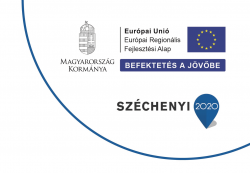Biography
Albert Szent-Györgyi de Nagyrápolt (Hungarian: Nagyrápolti Szent-Györgyi Albert) September 16, 1893 – October 22, 1986) was a Hungarian physiologist who won the Nobel Prize in Physiology or Medicine in 1937. He is credited with discovering vitamin C and the components and reactions of the citric acid cycle. He was also active in the Hungarian Resistance during World War II and entered Hungarian politics after the war.
Szent-Györgyi was born in Budapest, Kingdom of Hungary, Austro-Hungarian Empire, in 1893. His father, Miklós Szent-Györgyi, was a landowner, born in Marosvásárhely, Transylvania (today Târgu Mureş, Romania), a Calvinist, and could trace his ancestry back to 1608 when Sámuel, a Calvinist predicant, was ennobled. At the time of Szent-Georgyi's birth, the ability to trace one's ancestry was considered important and created opportunities that otherwise were not available. (Miklós Szent-Györgyi's parents were Imre Szent-Györgyi and Mária Csiky). His mother, Jozefina, a Roman Catholic, was a daughter of József Lenhossék and Anna Bossányi. Jozefina was a sister of Mihály Lenhossék; both of these men were Professors of Anatomy at the Eötvös Loránd University. His family included three generations of scientists. Music was important in the Lenhossék family. His mother Jozefina prepared to become an opera singer and auditioned for Gustav Mahler, then a conductor at the Budapest Opera. He advised her to marry instead, since her voice was not enough. Albert himself was good at the piano, while his brother Pál became a professional violinist.
Involvement in politics
As the government of Gyula Gömbös and the associated Hungarian National Defence Association gained control of politics in Hungary, Szent-Györgyi helped his Jewish friends escape from the country. During World War II, he joined the Hungarian resistance movement. Although Hungary was allied with the Axis Powers, the Hungarian prime minister Miklós Kállay sent Szent-Györgyi to Cairo in 1944 under the guise of a scientific lecture to begin secret negotiations with the Allies. The Germans learned of this plot, and Adolf Hitler himself issued a warrant for the arrest of Szent-Györgyi. He escaped house arrest and spent 1944 to 1945 as a fugitive from the Gestapo.
After the war, Szent-Györgyi was well-recognized as a public figure and there was some speculation that he might become President of Hungary, should the Soviets permit it. Szent-Györgyi established a laboratory at the University of Budapest and became head of the biochemistry department there. He was elected as a member of Parliament and helped re-establish the Academy of Sciences. Dissatisfied with the Communist rule of Hungary, he emigrated to the United States in 1947.
In 1967, Szent-Györgyi signed a letter declaring his intention to refuse to pay taxes in protest against the U.S. war against Vietnam, and urging other people to also take this stand.
Personal life
He married Cornelia Demény, daughter of the Hungarian Postmaster-General, in 1917. Their daughter, Cornelia Szent-Györgyi, was born in 1918. He and Cornelia divorced in 1941.
In 1941, he wed Marta Borbiro Miskolczy. She died of cancer in 1963.
Szent-Györgyi married June Susan Wichterman, the 25-year-old daughter of Woods Hole biologist Ralph Wichterman, in 1965. They were divorced in 1968.
He married his fourth wife, Marcia Houston, in 1975. They adopted a daughter, Lola Von Szent-Györgyi.
Death
Szent-Györgyi died in Woods Hole, Massachusetts on October 22, 1986. He was Honored with a Google Doodle September 16, 2011, 118 years after his birth.




